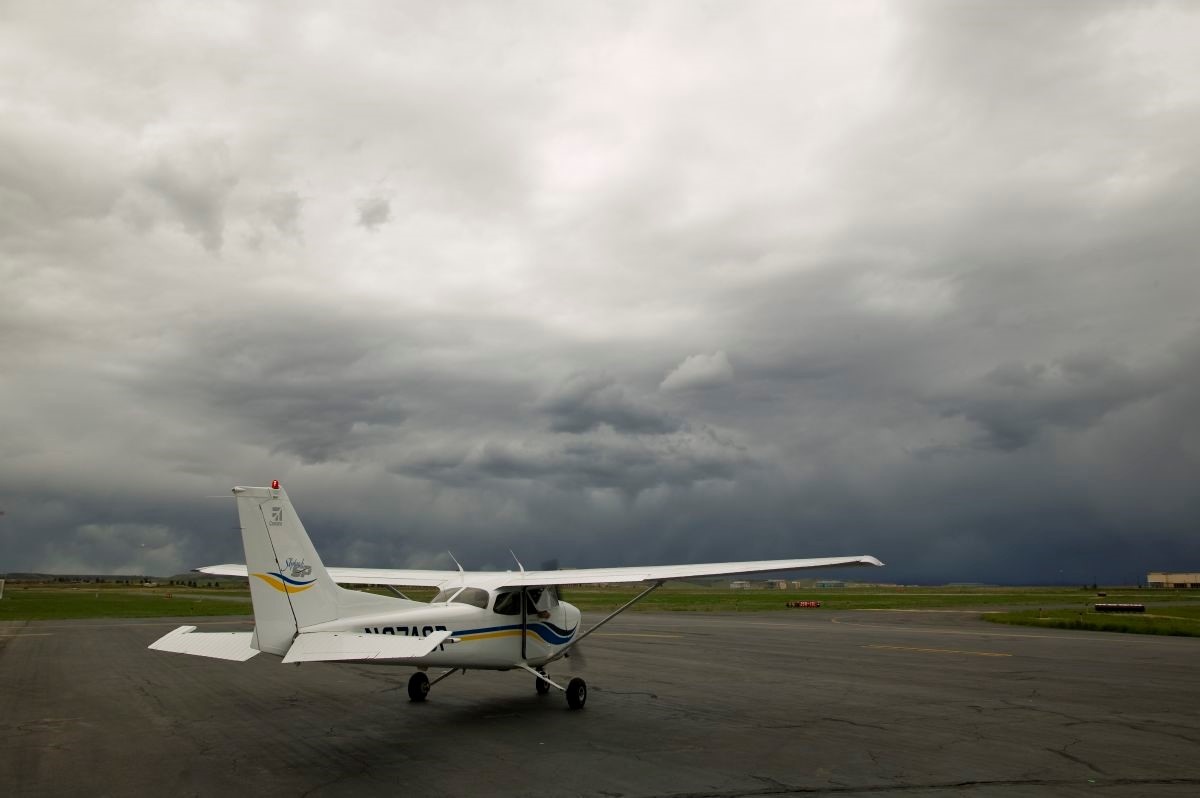Encountering IMC
SAFETY SPOTLIGHT: Spatial Disorientation

Should you stumble into instrument weather conditions, follow these steps:
- Don’t panic. Stay calm and remember you’ve trained for this.
- Scan your instruments. The attitude indicator (AI) is the primary flight instrument to reference when flying in IMC.
- Turn around. Make a standard-rate 180-degree turn.
- Be alert for altitude changes. If you observe a high rate of descent or ascent on the VSI or altimeter, ascertain the aircraft’s attitude before applying correctional controls.
- Trust your instruments. Don’t trust what your body tells you.
- Use an autopilot if so equipped. Autopilots have helped many pilots out of nasty situations. They’ve also gone unused as PICs have lost control of aircraft. Be familiar with and maintain your autopilot system. Understand the different modes of operation and how to engage and disengage them.
Zero Visibility Landing with Synthetic Vision
In an emergency, could you rely on synthetic vision to get you safely to the ground? Watch this video where synthetic vision is tested from takeoff to touchdown.
Recovery from Spatial Disorientation
If you experience confusing sensations after unexpectedly encountering IMC, scan all relevant instruments before making control inputs. Start with the attitude indicator (AI). The AI provides the main picture of what your airplane is doing. See where the nose is and where the wings are in relation to the horizon. Note the airspeed, vertical speed, and altitude. Should they indicate improper control of the aircraft, follow these steps:
- Level the wings.
- If losing or gaining altitude quickly, check to assure you’re not reaching critical airspeeds.
- Adjust power if necessary for airspeed, then smoothly apply back or forward pressure to stop vertical deviation and put the nose of the aircraft on the AI’s horizon.
- When the VSI reads zero, the aircraft is in the proper attitude for level flight.
- Maintain current altitude and reverse course to return to VFR conditions.
Tip: If your unusual attitude skills are rusty, go fly with a CFI and sharpen up!
The best way to appreciate the power of spatial disorientation and the speed at which it can develop is by experiencing it yourself.
Simulate Spatial Disorientation
The best way to appreciate the power of spatial disorientation and the speed at which it can develop is by experiencing it yourself. Fortunately, this can be done without ever leaving the ground. Several training devices can induce spatial disorientation in a supervised setting, providing a vivid demonstration of its effects. We recommend pilots seek out training in a simulator such as the ones listed below:
- A Barany chair. This is a simple rotating chair designed to induce spatial disorientation. Even a swiveling office chair can be used. When slowly spun and then brought to a smooth stop, a seated subject whose eyes are closed and whose head is tilted down will become disoriented when their head is raised.
- The GAT II trainer. This is a computerized, three-axis simulator used primarily for instrument flight training. GAT II trainers have more than a dozen programs that demonstrate various forms of spatial disorientation, from a graveyard spiral in a cloud, to disorienting visual cues.
- The Vertigon. This device, displayed and demonstrated at many airshows, consists of a rotating seat on gimbals allowing the plane of the seat to be changed as it turns. It quickly proves to pilots that their senses can’t be trusted.
Tip: Don’t try this on a full stomach. Disorientation can have profound physiological effects!
Tip: Redbird and other partial-motion simulators have also been known to give spatial disorientation.